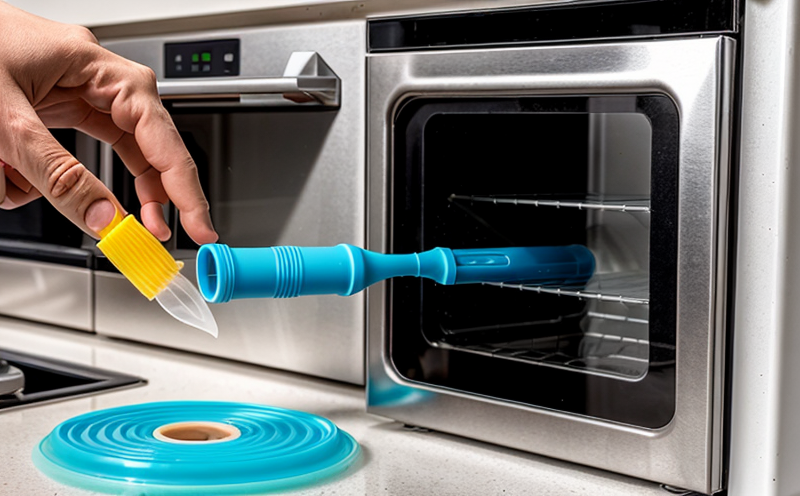ISO 11469 Household Plastics Material Marking Testing
The ISO 11469 standard addresses the critical issue of material marking on household plastics, ensuring that manufacturers can accurately identify and differentiate materials used in consumer products. This is particularly important for compliance with regulatory requirements and to ensure product safety and traceability.
Material marking on household plastics serves multiple purposes: it aids consumers in understanding the composition of the item they are purchasing; it supports recycling efforts by providing clear identification of the material type; and it ensures that manufacturers can accurately track their inventory. Proper marking also reduces the risk of mislabeling, which could lead to product recalls or consumer safety issues.
The testing process under ISO 11469 involves several steps. Initially, specimens are prepared according to the standard's requirements for marking, which include ensuring that the marking is durable and legible over time. Once prepared, these specimens undergo visual inspection by trained personnel who check the clarity and completeness of the markings.
Following visual inspection, more rigorous tests may be conducted using specialized equipment such as microscopes or spectrophotometers to verify the durability and permanence of the marking. Additionally, the colorfastness and resistance to environmental factors like UV light and moisture are evaluated. These tests ensure that the material marking remains intact throughout the product lifecycle.
The acceptance criteria for ISO 11469 testing include verifying the correct application of the marking according to the specified standards. This involves checking the accuracy, legibility, and durability of the marking across a variety of environmental conditions. Compliance with these criteria ensures that the material marking meets both internal quality control standards and external regulatory requirements.
The importance of ISO 11469 testing cannot be overstated, especially in sectors where compliance is critical for maintaining consumer trust and ensuring product safety. By adhering to this standard, manufacturers can enhance their reputation as responsible and trustworthy entities in the eyes of consumers and regulators alike.
For quality managers, compliance officers, R&D engineers, and procurement teams, ISO 11469 testing provides a clear framework for material marking that is both legally compliant and technically sound. This standard helps to streamline processes, reduce errors, and ensure product integrity across the supply chain.
Why It Matters
The implementation of ISO 11469 testing is crucial for several reasons:
- Consumer Trust: Proper material marking enhances consumer confidence in the products they purchase. Knowing that a product’s materials are accurately identified and marked can influence purchasing decisions.
- Regulatory Compliance: Many countries have regulations requiring clear labeling of household plastics to ensure recycling efforts are effective and safe.
- Risk Management: Accurate material marking reduces the risk of product recalls due to mislabeling or incorrect identification, which can be costly and damaging to a company’s reputation.
- Sustainability: By ensuring that plastics are correctly identified, recycling processes become more efficient, reducing waste and conserving resources.
For manufacturers and suppliers in the household plastics sector, compliance with ISO 11469 is not just a requirement but also an opportunity to demonstrate commitment to quality and sustainability. This standard helps companies navigate complex regulatory landscapes, ensuring they meet both domestic and international standards.
Environmental and Sustainability Contributions
The environmental benefits of ISO 11469 testing extend beyond the immediate product lifecycle into broader sustainability initiatives:
- Recycling Efficiency: Clear material markings facilitate more efficient recycling processes, ensuring that plastics are sorted correctly for reprocessing.
- Resource Conservation: By reducing the amount of waste sent to landfills through effective recycling, ISO 11469 helps conserve natural resources and reduce energy consumption in production.
- Eco-Friendly Production: Ensuring that household plastics are accurately marked promotes a circular economy model, which can lead to reduced emissions and lower environmental impact.
Compliance with ISO 11469 supports global sustainability goals by encouraging responsible waste management practices. This standard plays a key role in promoting sustainable development and reducing the carbon footprint of the household plastics industry.
Use Cases and Application Examples
ISO 11469 testing is applicable across various scenarios within the household plastics sector:
- Product Development: Ensuring that new products meet marking standards helps avoid costly recalls and ensures compliance with international regulations.
- Supply Chain Management: Accurate material markings improve traceability throughout the supply chain, aiding in quality control and inventory management.
- Consumer Education: By providing clear information about product materials, ISO 11469 helps consumers make informed choices, enhancing overall trust in the market.
- Recycling Programs: Properly marked household plastics enable more effective recycling programs, which can significantly reduce waste and promote resource efficiency.
These use cases highlight how ISO 11469 testing contributes to a more sustainable and efficient household plastics industry. By adhering to this standard, companies not only meet regulatory requirements but also contribute positively to environmental sustainability efforts.





